
After spending most of the '90s as a member of the Mid-West thrash and alt-metal scene with Atomic Opera and Stone Sour, Jim Root joined Des Moines, Iowa nu-metal-meets-groove-metal outfit Slipknot. Soon, he became known as #4, donned a mask akin to Michael Myers, and, with an array of shred-leaning guitars, teamed up with Mick Thomson to flip metal on its end and bash its skull in.
To that end, Slipknot's debut, 1999's Slipknot, was a revelation, injecting chugging metallic flakes of musical alloy into a metal scene leaning on Limp Bizkit, Korn, and the lot.
Simply put, an attack like Root and Thomson's was heavier, nastier, and far more distinctive than what was popular at the time. "It's weird," Root says. "I don't… it's hard for me to look at any of that stuff objectively. I don't really realise it until something says something like that."
He adds: "It kind of makes me go, 'Oh, well…' I mean, you're living every day, you know? I'm still learning. I'm still trying to learn how to write songs."
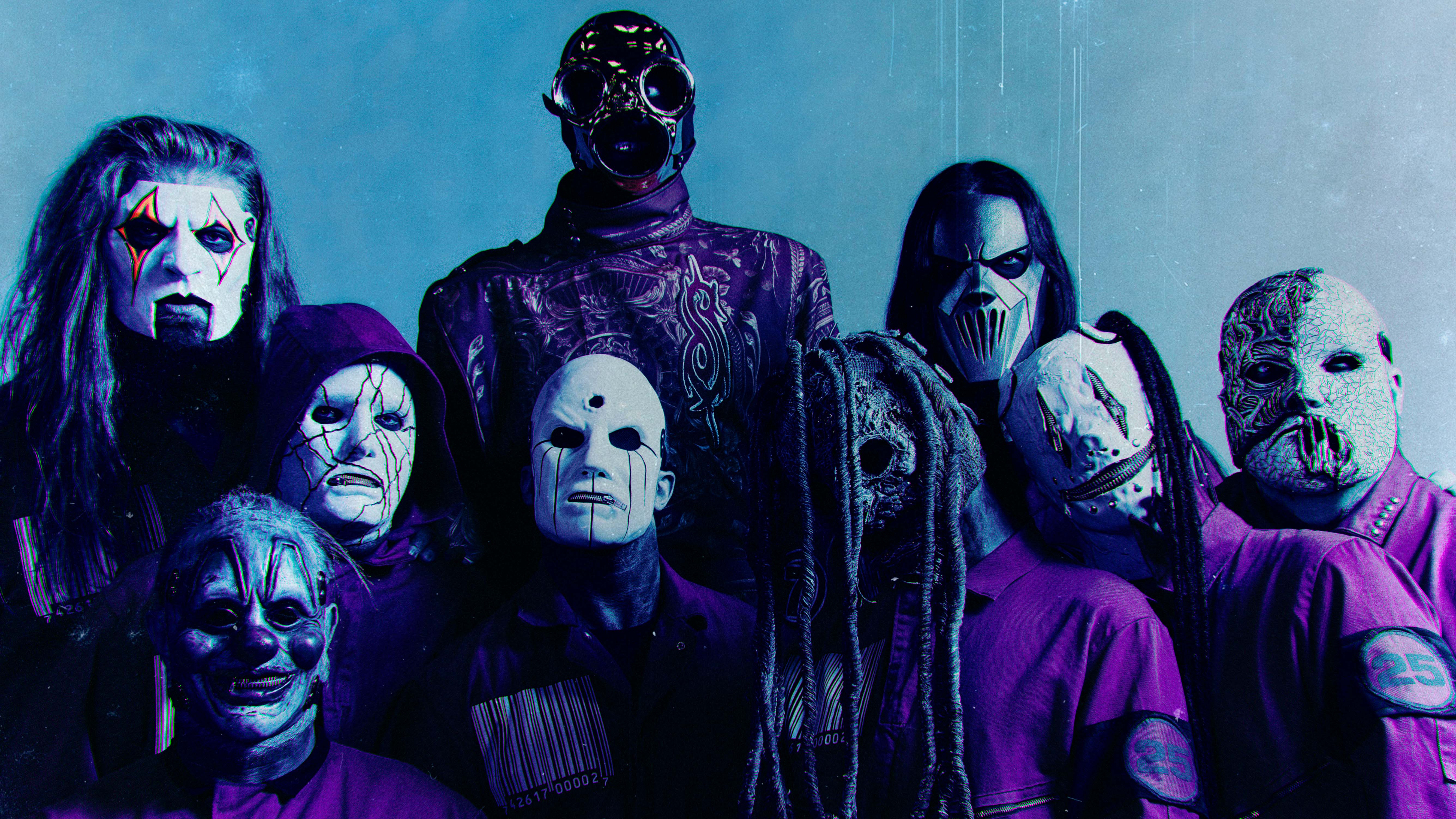
Since Root stepped into Slipknot, and shook the world alongside Corey Taylor, the band has unleashed an additional six records, the last being 2022's The End, So Far. Along the way, Root has weaved his way back in and out of Stone Sour and dropped a host of tasty signature guitars.
I even fight producers in the studio over it
Be it a Tele, Jazzmaster, or some of his trusty Jackson, Chavel, and debut album tour-era PRS curios, Root keeps things fresh, but guitars aren't the only elements that's subject to change as he evolves. "Just rolling back the gain a little, but on my amp is one thing," he laughs. "I've been so reluctant to do that."
He explains: "I even fight producers in the studio over it, you know? It's like they're trying to tell me, 'It's not gonna be as mushy,' and I know it's gonna fucking cut and have more attack, but then I'm like, 'Yeah… but then I'm gonna have to work harder and play more articulately [laughs]."
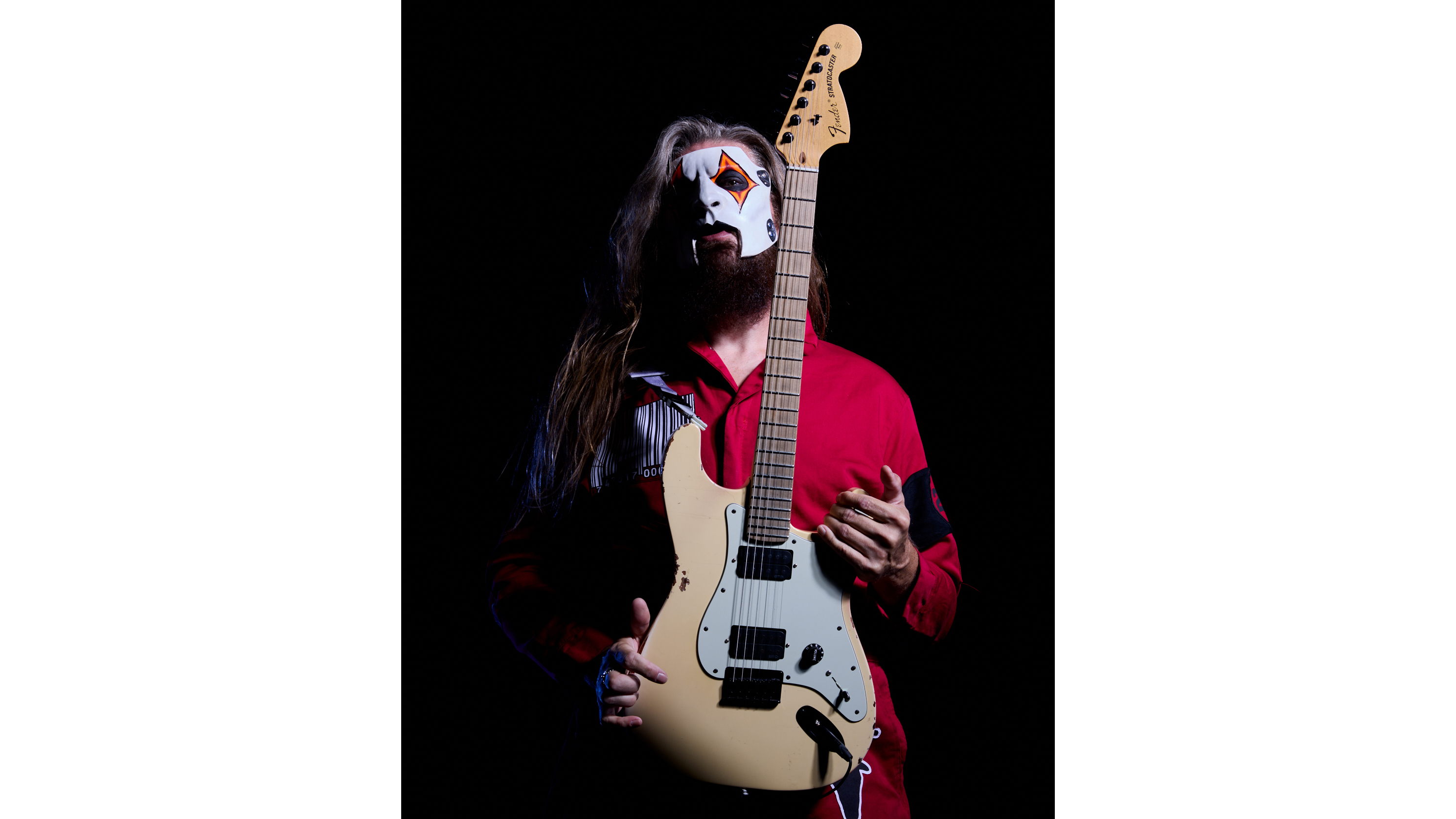
Lately, Root has been working alongside his Slipknot bandmates in preparation to hit the road in celebration of their groundbreaking debut's 25th anniversary. The word is that he's dusting off the guitars he used while on the road in the late '90s and early 2000s—and that's no surprise.
But what has been surprising is Root's admission of amp modellers entering his normally tube-leaning midst. Root says it came out of convenience and the need to "reduce the size of the rig for when Slipknot plays smaller venues."
It works for me; it may not work for everybody else, but everybody else isn't doing what I'm trying to do
"The Quad Cortex is working really well," he says. "I don't have any, like, massive complaints about it. Maybe I need to spend a little bit more time with it, like dialling some things in, and I have noticed, ironically enough, that I like using it better direct than I do with a power amp through a speaker cabinet and having a mic in front of the speaker cabinet. I think it does what it's meant to do better that way."
He also adds that his signature Orange Rockerverb MkIII heads will remain present no matter what and that when it comes down to it, he's still a tube purist. "Tone-chasing is a never-ending saga," he says. "You just kind of… at some point, you have to be like, 'Okay, this is good, it's functional, it works. It works for me; it may not work for everybody else, but everybody else isn't doing what I'm trying to do.'"
Would I have loved to have the tone of Randy Rhoads, Brad Gillis, or any of these guitar players who had unique, distinct tones? Yeah, I f*****g would love that
Despite the advances in tech, large-scale success, and the expansion of his skillset, 25 years after he shook the world, Root is still working at his craft. "Everything is such a learning process," he admits. "Every day, you're struggling to be better, so it's hard to sit back and look objectively at everything."
Still, he does look back. And when he does, he's got nothing but gratitude. "It just sort of organically happened," Root reflects. "Would I have loved to have the tone of Randy Rhoads, Brad Gillis, or any of these guitar players who had unique, distinct tones? Yeah, I fucking would love that!"
"But I'm not the only guitar player in the band," he explains. "We have so much going on; you have to find a place for that to sit. If that means setting your amp like you normally wouldn't set it, then that's what you've got to do."
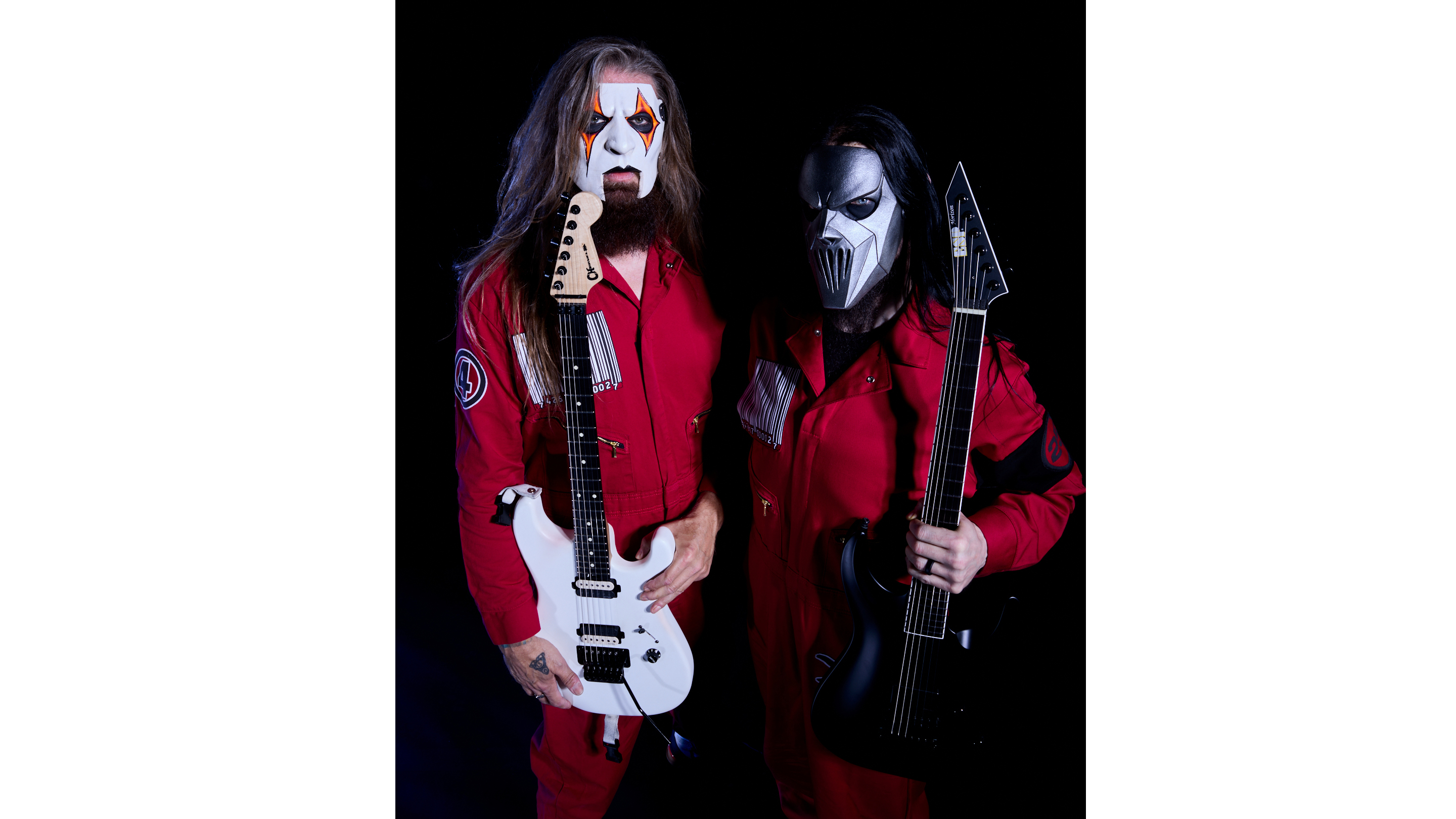
As for how he sees the sound of Slipknot, Root takes it back to barebones basics. "It's organically evolved into what it is," he says. "There's something to be said about your fingers and the tone that your fingers put out. Mick and I could be playing through the exact same amplifier, with the exact same guitar, and he could hand me the guitar, and I'll play it, and it'll sound totally different."
"It's not like I have somebody showing me our achievements every day," he adds. "I still wake up, drink coffee, scratch my ass, and think, 'What am I going to do today?' It all just goes with our personalities, and making music that we try not to put any limits on."
As he prepares to hit the road with Slipknot in celebration of the band's iconic debut, we asked Jim Root to choose his four favorite pieces of gear right now.
Mesa/Boogie .50 Caliber Plus 2-Channel 50-watt Amplifier
I'm going to be bringing them with me when we start recording and doing pre-production in the studio
"In the early days, I had two .50 Calibers, and I forgot how good they sounded. They sounded so fucking good. That's my favorite bit of gear, and I haven't had a chance to use it in the Slipknot world lately, but I'm going to be bringing them with me when we start recording and doing pre-production in the studio.
Right now, if I'm at home, I'm plugging into my .50 Caliber and my old 5150
"Right now, if I'm at home, I'm plugging into my .50 Caliber and my old [Peavey] 5150, but I've been kind of hovering around that Boogie .50 Caliber for a while. It's really good, and I've got one that's been modded; it's got a better transformer, and it just sounds monstrous. So, on the amp side of things, that's kind of what I've been digging lately.
Jackson American Series Virtuoso
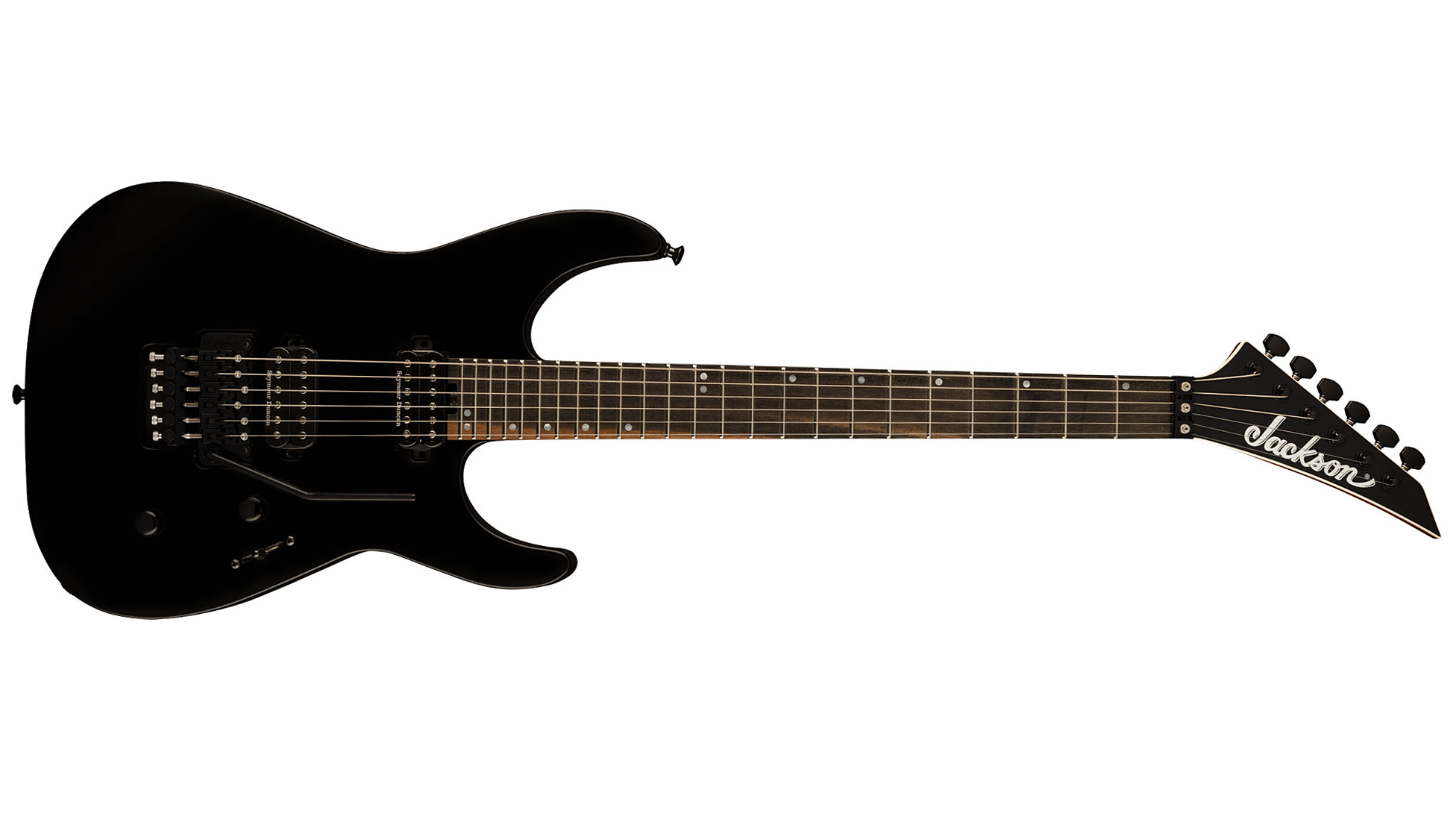
I've been tripping out on the Dinky Jacksons that are bolt-on. I don't know why, but I like the American Virtuoso series; I've been tripping out on those guitars. It's so good.
I've been trying to find a Made-in-Japan Jackson that's also bolt-on. There's just something really cool about them, like the neck profiles are badass on them. They even come with Seymour Duncans, and they're just really good.
Fender Tonemaster Pro
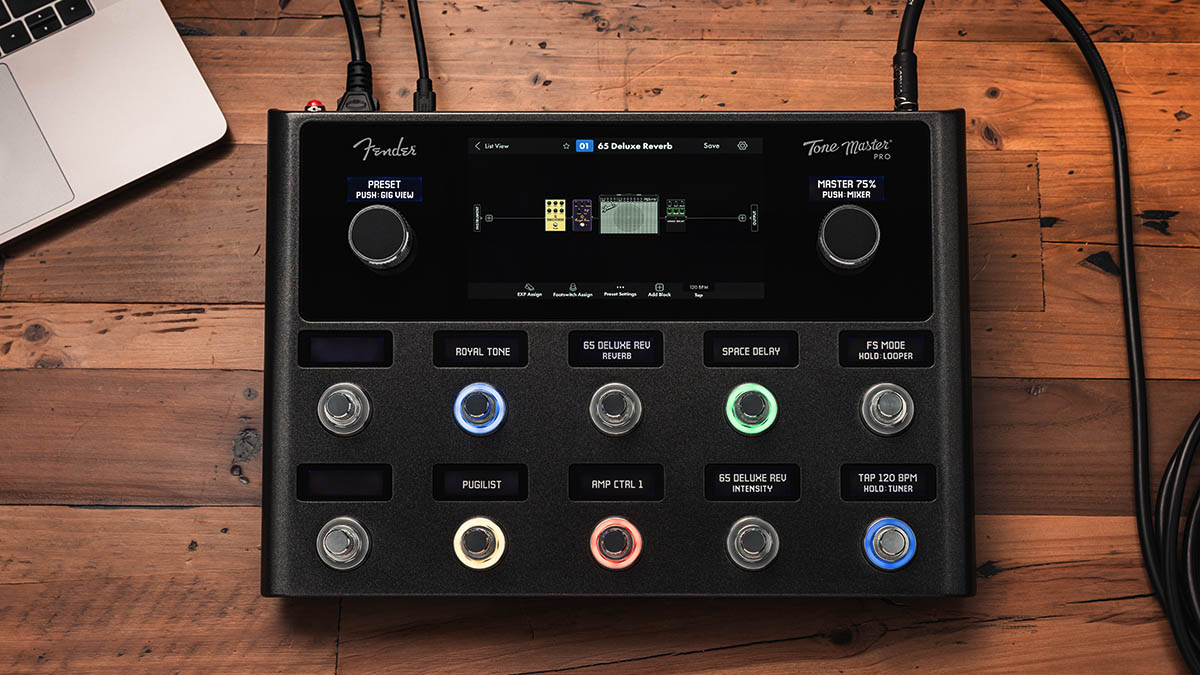
In the Quad Cortex world, there's the Fender Tone Master Pro, that they sent me. It's kind of like a pedalboard version and is sort of like a Quad Cortex. I haven't used that in the band situation yet, but I've been using it here at home for home recording—and that thing's pretty rad. It sounds really good, and you can dial in some really cool lead tones with it with a little bit of delay and a little bit of reverb on it.
It sounds really good
"Man, it sounds really good; the 5150 in it sounds pretty good. You can get a nice clunk and some mid-rangy kind of hunk to it. It's a pretty cool piece of gear that I've been messing around with. I've got a couple of 10-inch powered speakers I'm using with it. I'm not recording with it yet; I'm just noodling around in my Call Of Duty room, let's say.
Fender Limited Edition Player Stratocaster HSS HT

I'm signed up to the vendor e-mail list, so whenever they [Fender] drop a new series of guitars, or whatever, I check them out. I happened to read the specs on this guitar and saw that it was a hardtail. I was like, 'Well, that's cool.'
"Most of my guitars are hardtails, like my Strats, my Teles, and my Jazzmasters, so that was cool. But then, I saw that it had a 12-degree radius [fretboard], and I was like, "Oh, that means I can drop the action nice and low and set it up to kind of shred."
If you're in a band, and you're playing cover tunes, and you go from metal to pop or even country, you could cover it with this guitar
"And it was an HSS [one humbucker and two single coil pickups] setup, so I was like, 'Yeah, I'm buying one of those.' So, I just went to Fender's website, ordered it from the website, and it showed up. I took it out of the box, dropped the action, straightened out the neck, and adjusted the truss road a little, but I tuned it up and just noodled around on it. I was like, "Yeah, this is a cool guitar." The pickups do their job; it's sort of like, if you're in a band, and you're playing cover tunes, and you go from metal to pop or even country, you could cover it with this guitar.
It's like a jack-of-all-trades thing. And it's got the five positions, you know, the toggle, so you can get that out-of-phase, like Stevie [Ray Vaughan] tone going. You can get that fat, bubbly, you know, single-coil neck thing. Like that shiny thing, and then, it has the humbucker in the bridge, so you can go for the Iron Maiden vibes and tones, or even throw an overdrive in front, and it's great.
Find out more at Fender.com







